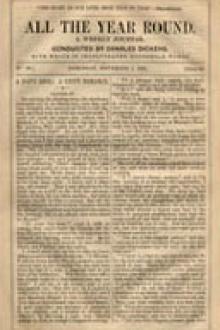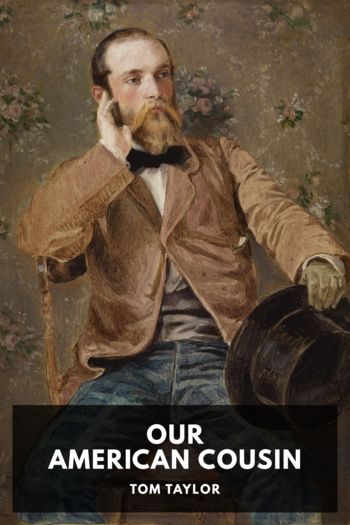Struggles and Triumphs, P. T. Barnum [good books to read in english .txt] 📗

- Author: P. T. Barnum
Book online «Struggles and Triumphs, P. T. Barnum [good books to read in english .txt] 📗». Author P. T. Barnum
Anxious to gather curiosities from every quarter of the globe, I sent Mr. John Greenwood, junior, (who went for me to the isle of Cyprus and to Constantinople, in 1864,) on the “Quaker City” excursion, which left New York June 8, 1867, and returned in the following November. During his absence Mr. Greenwood travelled 17,735 miles, and brought back several interesting relics from the Holy Land, which were duly deposited in the Museum.
Very soon after entering upon the premises, I built a new and larger lecture room, which was one of the most commodious and complete theatres in New York, and I largely increased the dramatic company. Our collection swelled so rapidly that we were obliged to extend our premises by the addition of another building, forty by one hundred feet, adjoining the Museum. This addition gave us several new halls, which were speedily filled with curiosities. The rapid expansion of the establishment, and the immense interest excited in the public mind led me to consider a plan I had long contemplated, of taking some decided steps towards the foundation of a great free institution, which should be similar to and in some respects superior to the British Museum in London. “The Barnum and Van Amburgh Museum and Menagerie Company,” chartered with a capital of $2,000,000 had, in addition to the New York establishment, thirty acres of land in Bridgeport, whereon it was proposed to erect suitable buildings and glass and wire edifices for breeding and acclimating rare animals and birds, and training such of them as were fit for public performances. In time, a new building in New York, covering a whole square, and farther up town, would be needed for the mammoth exhibition, and I was not without hopes that I might be the means of establishing permanently in the city an extensive zoological garden.
It was also my intention ultimately to make my Museum the nucleus of a great free national institution. When the American Museum was burned, and I turned my attention to the collection of fresh curiosities, I felt that I needed other assistance than that of my own agents in America and Europe. It occurred to me that if our government representatives abroad would but use their influence to secure curiosities in the respective countries to which they were delegated, a free public Museum might at once be begun in New York, and I proposed to offer a part of my own establishment rent-free for the deposit and exhibition of such rarities as might be collected in this way. Accordingly, a week after the destruction of the American Museum, a memorial was addressed to the President of the United States, asking him to give his sanction to the new effort to furnish the means of useful information and wholesome amusement, and to give such instructions to public officers abroad as would enable them, without any conflict with their legitimate duties, to give efficiency to this truly national movement for the advancement of the public good, without cost to the government. This memorial was dated July 20, 1865, and was signed by Messrs. E. D. Morgan, Moses Taylor, Abram Wakeman, Simeon Draper, Moses H. Grinnell, Stephen Knapp, Benjamin R. Winthrop, Charles Gould, Wm. C. Bryant, James Wadsworth, Tunis W. Quick, John A. Pitkin, Willis Gaylord, Prosper M. Wetmore, Henry Ward Beecher, and Horace Greeley. This memorial was in due time presented, and was endorsed as follows:
“Executive Mansion, Washington, D. C.
“April 27, 1866.
“The purpose set forth in this Memorial is highly approved and commended, and our Ministers, Consuls and commercial agents are requested to give whatever influence in carrying out the object within stated they may deem compatible with the duties of their respective positions, and not inconsistent with the public interests.
“Andrew Johnson.”
I went to Washington myself, and had interviews with the President, Secretaries Seward, McCulloch and Welles, and also with Assistant Secretary of the Navy, G. V. Fox, who gave me several muskets and other “rebel trophies.” During my stay at the capital I had a pleasant interview with General Grant, who told me he had lately visited my Museum with one of his sons, and had been greatly gratified. Upon my mentioning, among other projects, that I had an idea of collecting the hats of distinguished individuals, he at once offered to send an orderly for the hat he had worn during his principal campaigns. All these gentlemen cordially approved of my plan for the establishment of a National Museum in New York.
But before this plan could be put into effective operation, an event occurred which is now to be narrated: The winter of 1867–68 was one of the coldest that had been known for years, and some thirty severe snowstorms occurred during the season. On Tuesday morning, March 3rd, 1868, it was bitter cold. A heavy body of snow was on the ground, and as I sat at the breakfast table with my wife and an esteemed lady guest, the wife of my excellent friend Rev. A. C. Thomas, I read aloud the general news from the morning papers. Leisurely turning to the local columns, I said, “Hallo! Barnum’s Museum is burned.”
“Yes,” said my wife, with an incredulous smile, “I suspect it is.”
“It is a fact,” said I, “just listen; ‘Barnum’s Museum totally destroyed by fire.’ ”
This was read so coolly, and I showed so little excitement, that both of the ladies supposed





Comments (0)